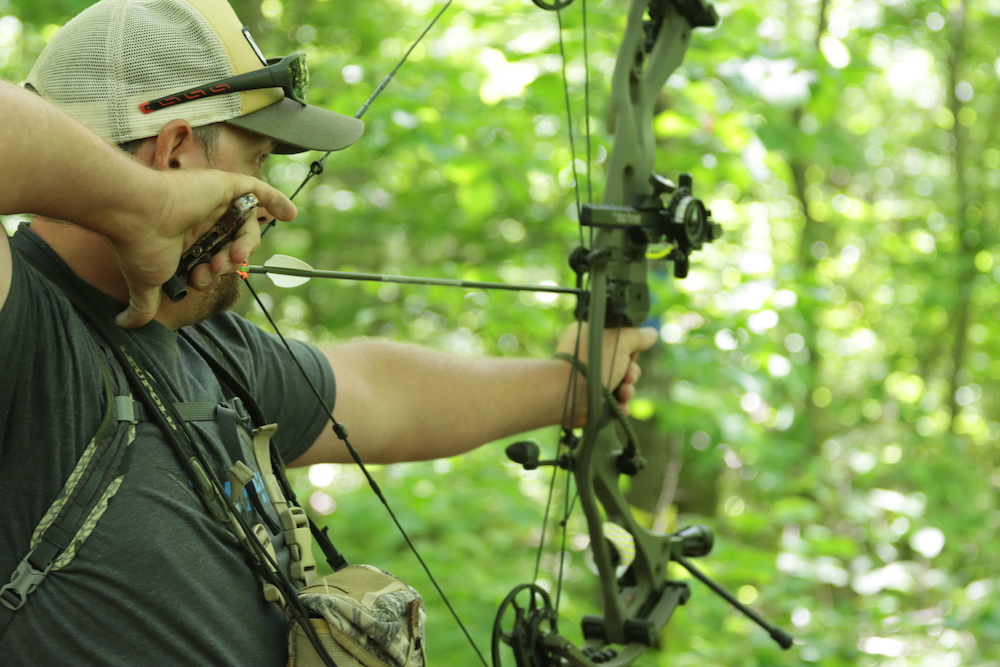Losing a vane or feather from your arrow during flight can cost you points in a competition, and time and money to fix the problem. It’s extremely annoying. So what causes it? Provided you’re not using very old fletching glue or tape that has lost its stickiness, the most common reason for lost fletchings is from clearance issues, i.e., the fletching is contacting some part of you or the bow during the shot and being torn loose.
One common clearance issue that’s the easiest to fix is caused by the archer’s clothing. Loose or baggy clothing, especially long sleeves, can impede the string upon release, which can cause the arrow to contact the bow. Obviously, the fix for this problem is to wear short sleeves or tighter-fitting long sleeves. An arm guard can also aid in keeping your sleeves out of the way of the bow string.
The next clearance issue comes from the archer. Improper body alignment can actually disturb the flight path of the arrow while it is being accelerated by the string, thus causing the arrow to contact the bow on its way by. That can tear a fletching. A ragged or plucked release of the string for a recurve archer can also cause the arrow to contact the bow upon release. The fix: Seek advice from a coach or more knowledgeable archer to help with form and alignment issues. A more efficient release and proper body alignment can help prevent the unwanted contact.

Nock rotation on the arrow is another frequent offender for torn fletchings. Compound and recurve each require their own orientation of the nock with the fletching so that the arrow can pass by the riser with the fletching out of the way. For compounds, the most common orientation is to have a fletch pointing to either the 12 or the 6 o’clock position, and for recurves it’s usually either the 3 or the 9 o’clock position. But these nock rotations don’t always work for everyone, so it is up to the archer to experiment with rotating their nocks so that they get proper fletching clearance. Shooting several groups with slightly different nock rotations will quickly show which orientation works best for you, and this will help keep your fletching from falling off.
The most troublesome cause of fletching contact is a poorly tuned bow. As we all know, the arrow bends as it leaves the bow (especially with a recurve); an arrow that flexes too much (or not enough) will likely make contact with the arrow rest and/or plunger as it passes. Make sure to check the tuning on your bow if your fletching keeps getting torn or knocked off. Selecting the proper arrow spine for your draw weight will help a lot with tuning issues, and this can be done with an arrow spine selector chart.
If contact between your fletching and riser continues, there is a way to investigate where the contact is happening near your arrow rest; sprinkle baby powder in the cutout of your riser, where the arrow rest and/or plunger is located. Once you shoot an arrow, you’ll be able to see streaks form in this layer of powder as a result of your arrow or fletching making contact with your riser. You will also be able to see which part of the arrow is contacting your bow, indicated by powder residue on your arrow and fletching. From there, you’ll be able to adjust your equipment appropriately to reduce or stop the contact.




